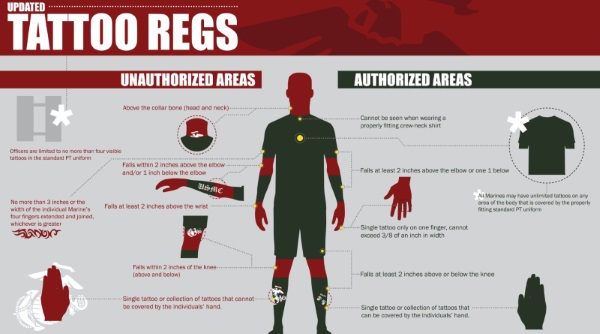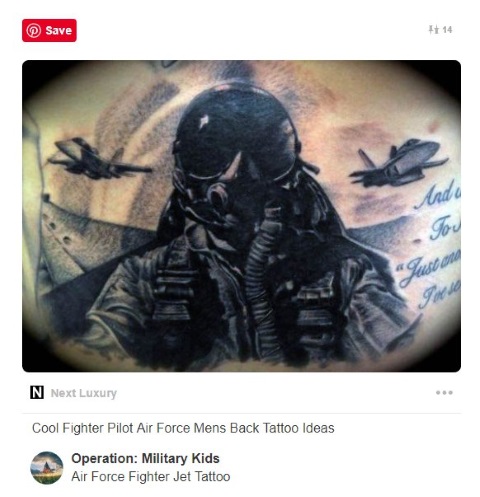Note: This article was originally written in 2019, and has been recently updated to reflect current events and trends. Any updated information within the article was done by our fact-checker, Fawn.
So you’re thinking about joining the military, but you’re concerned about those gnarly tattoos. And who could blame you? After all, many people think the military is a no-tat zone. But in reality, you can actually get away with some ink here and there.
In fact, you’d be surprised at how lenient military tattoo policies are becoming.
Which is good news for you and the rest of the younger crowd. According to Pew Research, 40% of millennials have at least one tattoo.
That’s nearly half the millennial population!
With that said, a good chunk of those millennials may end up regretting that choice in the future.
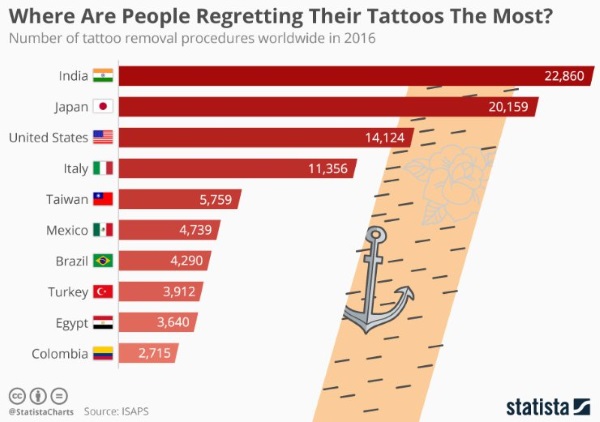
If you have one or more tattoos and want to join the Army, Navy, Marines, Air Force, or Coast Guard… you must learn exactly what your desired branch allows and does not allow.
The last thing you want is to have a laser-focused desire to join, and then come to find they’re not alright with the skull and crossbones on your calf. Oops.
Not to worry, we’ve done the homework for you.
This is the most up-to-date resource out there on tattoo policies of the different military branches. And it’s constantly being updated.
We cover everything about what is and is not okay, so you’re not left in the dark.
The purpose of this article is to give you the full details on the tattoo policies for each branch in 2021. So without further ado… let’s jump right in.
Jump To A Branch
– What’s allowed in the Navy?
– What’s NOT allowed in the Navy?
– Popular Navy tattoo ideas and their meanings
– What’s allowed in the Army?
– What’s NOT allowed in the Army?
– Popular Army tattoo ideas and their meanings
– What’s allowed in the Marines?
– What’s NOT allowed in the Marines?
– Popular Marines tattoo ideas and their meanings
– What’s allowed in the Air Force?
– What’s NOT allowed in the Air Force?
– Popular Air Force tattoo ideas and their meanings
Coast Guard Tattoo Policy 2023
– What’s allowed in the Coast Guard?
– What’s NOT allowed in the Coast Guard?
– Popular Coast Guard tattoo ideas and their meanings
Navy Tattoo Policy
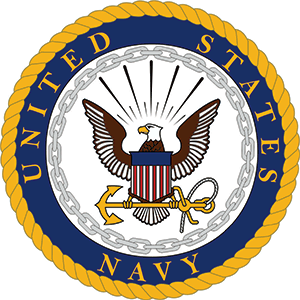
Update! Read our full article on the Navy Tattoo Policy here.
The Navy has one of the most relaxed tattoo policies of all the military branches.
If you have loads of tattoos, big tattoos, loud tattoos, and pretty much anything in-between, the US Navy might be your best bet.
Not long ago, USAToday caught up with Master Chief Petty Officer of the Navy Mike Stevens, who put it this way:
“We just got to the point where we realized we needed to be honest with ourselves and put something in place that was going to reflect the realities of our country and the needs of our Navy… We need to make sure that we’re not missing any opportunities to recruit and retain the best and the brightest because of our policies.”
In other words, they don’t want to miss out on true talent or dedicated men and women because of some ink.
Did you know: Tattoos in the US actually have their beginnings in the Navy.
Legend has it that US Sailors touring Southeast Asia were charmed by the local islanders’ body art.
So they learned the techniques and imported them back home. Ever heard of Sailor Jerry?
He was a pioneer in American tattooing.
Related Article: Can You Join The Military With A DUI? It Depends…
What Tattoos Are Allowed in the Navy?
As of April 2018, sailors can sport a single neck tattoo (including behind the ear), as long as it isn’t bigger than 1-inch in diameter.
Additionally, tattoos below the knee and elbow, no matter the size and quantity, are perfectly fine.
This means full sleeves are allowed. Hand and ring tattoos are permitted as well.
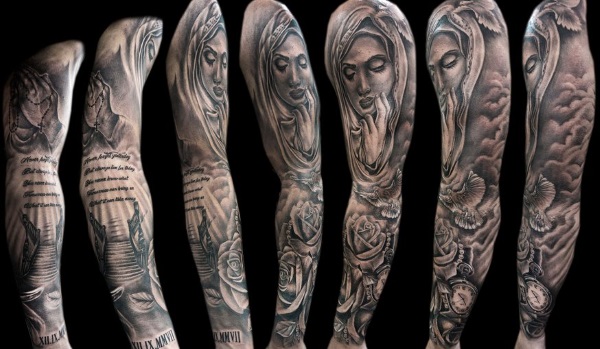
This new policy isn’t much different from one released in 2016.
The only major difference is the addition of the small neck tattoo.
Before that, however, the Navy’s policy on tattoos hadn’t been changed in over a decade.
One relatively new amendment to the Navy’s tattoo policy is that they now allow sailors with sleeve tattoos to attain rank of Recruit Training command and other Recruiting command positions.
So don’t be too surprised if you see a full-sleeved, tattoo-loving sailor show up to your high school or college.
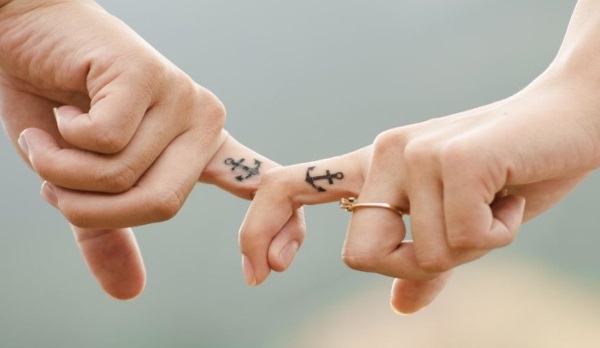
As far as cosmetic tattoos go, the Navy does allow cosmetic tattoos (performed by a licensed medical professional) to correct certain medical conditions.
But this is on a case-by-case basis.
All in all, compared to the Marines, the Navy is incredibly generous regarding their tattoo policy.
What Tattoos Are NOT Allowed in the Navy?
Now, you might want an exhaustive list of exactly what types of tattoos the Navy does not accept, but it’s not that easy.
While there are guidelines (discussed below) there aren’t any set-in-stone rules that cover every possible scenario.
Related Article – Navy Grooming Standards: Hair, Mustache, and Nail Regulations
Because let’s face it, the diversity of tattoos are only limited to the imagination, so new cases pop up all the time that the Navy must deal with on the fly.
With this in mind, it’s the commanding officer who gets the last say.
USAToday goes on to quote Stevens saying:
There are just so many variables when you look at tattoo language and tattoo art that it’s just not reasonable to try and identify a set list of what is and what isn’t acceptable. This is one of those areas where we trust this senior leadership, our triads, to be able to look at something in its context, using the chain of command and having discussions amongst themselves as to whether something is appropriate or not.
But here are some general guidelines to follow:
If your tattoos are in any way offensive, racist, sexist, extremist, or discredit America, unpack your bags.
The Navy has a strict policy regarding the content of tattoos.
They do not allow tattoos that discriminate against religion or national origin.
And any tattoos that suggests gang affiliation or the use of illegal drugs are not allowed.
Likewise, tattoos that are deemed “offensive” might also not pass the sniff test.

You cannot have any tattoos on your head or scalp, and nothing on the actual ear itself.
As previously mentioned, a neck tattoo cannot exceed the height/width dimensions of one inch.
However, in some cases, a neck tattoo that exceeds the maximum 1-inch x 1-inch dimension might be considered by the Navy recruiting commander.
But this tattoo must be located on the back of the neck, and not be touching the hairline or reaching behind the ears.
Furthermore, body mutilation is not allowed in the Navy.
This includes everything up to and including the following:
- Tongue forking
- Gauged or enlarged holes in ears
- Skin modification such as intentional scarring
- Intentional burns to create designs on skin
- Any sort of dental ornamentation such as gold front teeth
Finally, men are not permitted to wear body piercings.
However, women are allowed to wear one ball-studded earring in each ear.
Related Article: Navy Height And Weight Standards
Navy Tattoo Ideas And Meanings
The U.S. Navy has a rich history when it comes to tattoos and their meanings.
For instance, you might see an old-timer sporting an anchor, a few swallows, a dagger with a rose, etc.
The younger generations are catching on to the meaning behind these, and are carrying the torch and heading for the tattoo parlor for the same tattoos.
Here are a few U.S. Navy tattoo ideas and their meanings:
Nautical Star
The five-pointed Nautical Star tattoo symbolizes home for a sailor, or at least the ability to find their way home.
Often at sea for months on end, the sailor finds solace in the idea of “home” and the life they’ve left behind.
Swallows
Traditionally, sailors got inked up with a new swallow for every 5,000 nautical miles traveled.
The more swallows you see, the more seasoned the sailor.
Anchor
Perhaps the most common of all Navy tattoos, the anchor holds a significant meaning.
That is, a sailor gets an anchor tattoo when they sail across the Atlantic ocean or has served as a member of the merchant marine—an auxiliary fleet of ships that delivers troops and weapons during wartime.
Rope on the Wrist
This tattoo is exclusively reserved for the deckhand.
The sailor with a tattoo of a rope around his or her wrist is proud of the grueling work, rigging the hull and decks, and holding the responsibility of mooring and handling cargo.
Related Article – Navy Jobs List: A List Of All 71 Ratings In The US Navy
U.S. Army Tattoo Policy
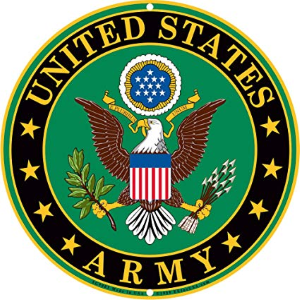
Update! Read our full article on the Army Tattoo Policy here.
Similar to the U.S. Navy tattoo policy, the U.S. Army’s tattoo policy is relatively lenient.
The Army loosened up a while ago with their policies.
In fact, it started back when America went to war with Iraq and Afghanistan and began ramping up their recruiting efforts.
They quickly realized they didn’t want to miss out on quality candidates because of a strict tattoo policy.
Over the years, the Army has been letting more and more tats slide.
USAToday caught up with U.S. Army Chief of Staff Gen. Ray Odierno and quoted him saying,
“Society is changing its view of tattoos, and we have to change along with that… It makes sense. Soldiers have grown up in an era when tattoos are much more acceptable and we have to change along with that.”
Sound familiar, right?
Those were nearly the same sentiments as Master Chief Petty Officer of the Navy Mike Stevens. So we’re seeing a trend here.
Lenient tattoo policies make for a larger recruiting pool to draw from.
So what sort of ink can a soldier get away with?
And what are the non-negotiable no-go’s?
Let’s jump in and find out.
Related Article – Army MOS List: A List Of All 159 Army Jobs
What Tattoos Are Allowed in the Army?
Well, the ‘Cliff Notes’ version of the Army’s tattoo policy goes something like this:
The wrist down and the neck up are off limits, with the exception of a single ring tattoo, otherwise it’s fair game.
While this might help to understand the policy in general terms, it’s actually a bit more nuanced than this.
It’s true that there are no limits as to how many tattoos, and the size of those tattoos, a soldier can have on their arms, legs, chest, and torso.
You can be tatted up pretty good in the Army.
(*Note – this is a recent update to an Army tattoo policy that only permitted four tattoos below the elbow, four tattoos below the knee, and no designs larger than the person’s hand. Those restrictions no longer stand).
And while you cannot have any hand tattoos (as we’ll discuss), you can have one ring tattoo per hand, located where you would naturally wear a ring.
Finally, permanent makeup such as eyebrows and eyeliner is allowed only on women, and must be applied conservatively and with modesty.
What Tattoos Are NOT Allowed in the Army?
As far as placement or location goes, we recommend the t-shirt test.
Throw on a t-shirt and stand in front of the mirror. Now, you cannot have any tattoos showing above the t-shirt collar line — or anywhere on the neck, ear, face, scalp, etc.
This restriction also includes any inner-mouth or eyelid tattoos (yes, those are a thing).
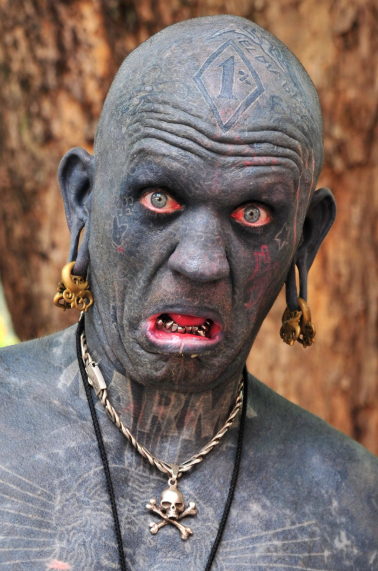
You cannot have any tattoos on your hands either (except for one ring per hand, as previously mentioned).
Related Article – US Army Grooming Standards
The hand is defined as any location below the wrist bone. With this in mind, it’s best not to have any ink on your wrists at all.
As far as content of the tattoos, the Army prohibits anything that is:
- Racist
- Derogatory
- Sexist
- Extremist
- Indecent
These types of tattoos cannot be located anywhere on your body. And believe us, they’ll check.
Of course, the terms above can be interpreted in different ways, so it’s ultimately up to your Recruiting Commander to make the call.
Also, if you have tattoos and eventually want to become an Officer or Warrant Officer, don’t worry, there’s still hope of moving up in rank.
You see, Commanders make recommendations for soldiers based on many considerations — so you likely won’t be rejected on account of your tattoos alone.
Finally, if you have a tattoo that you think will disqualify you from the Army, it’s worth a shot to check with the recruiters anyway.
You might get a waiver for, say, a tiny tattoo on your hand or something small behind your ear.
So don’t count yourself out!
U.S. Army Tattoo Ideas And Meanings
Unlike the more cryptic and subdued tattoos popularized by Navy Sailors, Army Soldiers traditionally get tattoos that are bold, bloody, and rich with images of wartime battle.
For instance, you might see a soldier with a tattoo depicting a bomb dropping, or two soldiers fighting for their lives in a foxhole.
Related Article – Army APFT Test Standards For Males and Females
Tanks, helicopters, and fighter jets are the norm… as are machine guns spitting bullets down a leg or an arm.
Here are a few of the more popularized Army tattoo designs…
Marines Tattoo Policy
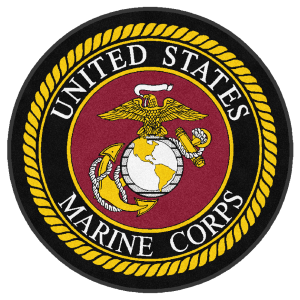
Update! Read our full article on the Marine Corps Tattoo Policy here.
Traditionally, the U.S. Marine Corps has had the strictest tattoo policy of all military branches.
After all, they want Marines to present themselves professionally, and a clean tattoo-free appearance is their ideal.
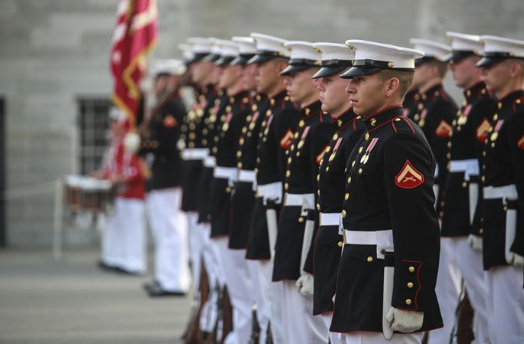
The Marines realize that times are changing and to remove barriers to entry, they have relaxed their tattoos policy.
They’ve loosened the rule book to accommodate new recruits with ink of all different sizes, shapes, and styles.
If you’ve been tracking, this seems to be the trend across all branches of military… and for good reason.
If you recall, nearly half of all millennials sport at least one tattoo on their body!
According to Marine Corps Bulletin 1020 — the Corps’ official tattoo policy — “The American people expect Marines to be disciplined, physically fit, and ready to accomplish any mission. They also expect Marines to represent the nation they are sworn to protect. The tattoo policy over the years has attempted to balance the individual desires of Marines with the need to maintain the disciplined appearance expected of our profession.
This Bulletin ensures that the Marine Corps maintains its ties to the society it represents and removes all barriers to entry for those members of society wishing to join its ranks.”
So what exactly does this “balance” look like?
Let’s have a look.
Related Article – Marine Corps Grooming Standards: Hair, Beard, And Nail Regulations
What Tattoos Are Allowed in the Marines?
Marines can have tattoos anywhere other than their hands (with exception to a single ring tattoo), and above the collarbone.
There are restrictions regarding content of tattoos, but we’ll get to that in a bit.
- Sleeve tattoos are now allowed but cannot fall below the wrist.
- Band tattoos (i.e. tribal bands) are permitted.
- Tattoos are not allowed above the collar bone and cannot be seen above the uniformed fitted T-shirt.
Hand tattoos are prohibited in the Marines, with the exception of a single band tattoo on the finger.
They can have “a single band tattoo of no more than 3/8 of an inch in width on one finger.” (Source)
Related Article: Marine Corps Height And Weight Standards
What Tattoos Are NOT Allowed in the Marines?
Locations
First off, let’s discuss what isn’t allowed in regards to location of tattoos in the Marines.
Tattoos are prohibited on the following body parts/locations:
- Hand, fingers, and wrist (with the exception of one ring as previously discussed)
- Head or neck (definition below)
- Face, including in or around the mouth, eyelids, etc.
- Anywhere above the collar bone
The Marine Corps posts their official regulations in Bulletin 1020.
For instance, the head and neck are defined as such:
The head is the portion of the body above the first cervical vertebrae (C1). While the neck is defined as the portion of the body above the collarbone in the front area, above the seventh cervical vertebrae (C7) in the back area.
Yes, they have it dialed down to the vertebrae… so you’d be wise not to pull a fast one on the Marine Corps.
Related Article – Marine Corps PFT Standards
Tattoo Content That’s Prohibited
As far as the content of prohibited tattoos, here are guidelines to be aware of.
Similar to the U.S. Navy and Army, the Marine Corps does NOT allow any tattoo (anywhere on the body!) that is “prejudicial to good order and discipline” or any tattoos that are “drug related, gang-related, extremist, obscene or indecent, sexist, or racist.” (Source)
Also, it’s worth noting a recent development that was communicated by Marine Corps’ Service Recruiter Staff Sgt. Justin Eckersley in a social post titled “Tattoo Leniency Alert!”
He wrote that the Marine Forces Reserve will allow prior service Marines who have “out of regulation tattoos” to join the reserves in certain circumstances.
According to Eckersley, one of the caveats is that the tattoos cannot be “egregious” or “racist” or located on the face, hands, etc. And this lenient tattoo policy waiver isn’t for everyone.
Rather, it’s specifically designed for “the Marines who have left the service and have at least 12 months remaining in the Individual Ready Reserves and an actual billet at the reserve unit.”
In the end, this leniency allows the Corps to bring back quality Marines who would have otherwise been disqualified from consideration.
Marines Tattoo Ideas And Meanings
Marines take their tattoos seriously. And their tattoos are typically loud and proud, with USMC set in bold for the world to see.
Like any branch of the military (and perhaps more so) the Marines have a brotherhood that extends beyond the battlefield.
So naturally, these themes are found in many of their tattoos.
Also, the idea of fierce loyalty, tenacity, and toughness are readily found in the most common designs.
So let’s have a look.
Eagle, Globe, and Anchor
The eagle, globe, and anchor is by far the most common Marine tattoo.
The eagle perched atop a globe is the official emblem and insignia of the U.S. Marine Corps.
The eagle symbolizes America, and is part of the emblem that associates the Marine Corps to the United States. The eagle is typically depicted carrying a banner in its beak with the Corp’s Moto, Semper Fidelis.
The globe symbolizes the worldwide commitment and the responsibility of the Marines to serve in any climate.
You’ll notice the anchor too, which represents the Marine’s ties with the Navy (did you know the Department of the Navy actually oversees the Marines?).
Related Article: Marine Corps Ranks And Pay
The Marine Bulldog
Who wouldn’t want a shredded bulldog dressed out in uniform tattooed on their arm?
The bulldog is another go-to Marine tattoo that symbolizes brute force and unrelenting authority.
Notice the USMC scrolled out in big, bold letters. And for bonus points, check out that eagle-perched-on-globe tattooed on the bulldog’s arm.
Yes, the tattoo has a tattoo.
Rank Insignia
Some Marines opt for the more subdued but classy look of their Rank Insignia tattooed on the body, and typically the arm.
The Chevron’s are a tell-tale sign that a Marine has moved up in rank.
You’ll see Lance Corporal, to Corporal, and all the way up to First Sergeant.
Semper Fi
The Marine’s Moto could easily top the list as one of the most common Marine tattoos. And the meaning behind it is steeped in rich history.
Semper Fi — or Semper Fidelis in latin — is the official motto of the U.S. Marines, and it dates back to the 1800’s.
It means “always faithful,” and you’ll often see it tattooed next to another quintessentially Marine saying: “Death before dishonor.”
Always faithful, death before dishonor, you get the point. Semper Fi!
Air Force Tattoo Policy
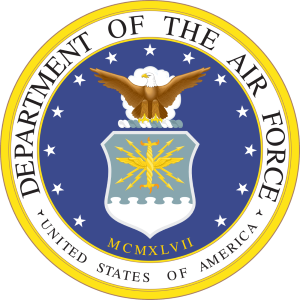
Update! Read our full article on the Air Force Tattoo Policy here.
The U.S. Air Force tattoo policy is next in our lineup. And the rules (or lack thereof) that Airmen must abide by might shock you.
Recently in 2016, following an AFI 33-360 required review, the Secretary of the Air Force Deborah Lee James communicated a shift away from their previous appearance and uniform policy.
It had been since 2010 that such matters were discussed.
And, according to Air Force Times, Senior leaders at the Air Staff level were reviewing the policies with the intent to continue their efforts of expanding the pool of eligible applicants for service, while still supporting the Air Force mission.
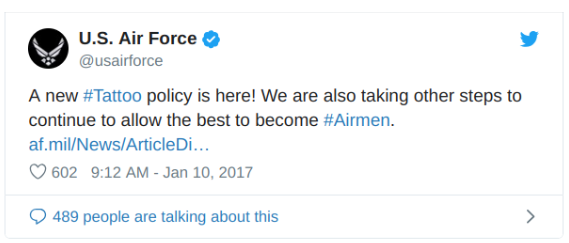
Secretary Deborah Lee James echoed these sentiments, saying
As part of our effort to attract and retain as many qualified airmen as possible, we periodically review our accessions policies… As a next step in this evolution, we are opening the aperture on certain medical accession criteria and tattoos while taking into account our needs for worldwide deployability and our commitment to the profession of arms.
Alright, so how and where does this new policy deviate from the old policy?
We’ll dive into the details in just a moment.
But first, here’s the lightning round that shows you the major changes that were officially announced and adopted February 1, 2017.
USAF Tattoo Policy
- Removes the 25% rule — a rule that stated Airmen could not have tattoos that were larger than 25% of their body
- Eliminates size restrictions on tattoos located on arms, chest, back, and legs
- Clearly defines the tattoo locations that are not permitted (i.e. face, head, scalp, neck, tongue, lips, eyelids)
- Allows for only one single-band ring tattoo, located on only one finger and one hand
Related Article – Air Force Grooming Standards: Haircuts, Mustaches, Beards, And More
What Air Force Tattoos Are Allowed?
Well, for starters, Airmen can sport tattoos that are nearly 100% the size of their body.
As previously mentioned, the Air Force has lifted the 25% rule (aka. The “Excessive” tattoo rule), and for good reason.
Recruiters were aware of the fact that nearly half of all millenials had a tattoo.
But what they quickly realized was that 1 in every 5 of the recruits who did have tattoos had tattoos that required review and were potentially disqualifying.
And the #1 disqualifier turned out to be the 25% rule.
Go figure.
Today, with that rule out the window, Airmen can have virtually any size tattoo, or grouping of tattoos, anywhere on their chest, back, arms, legs, and feet.
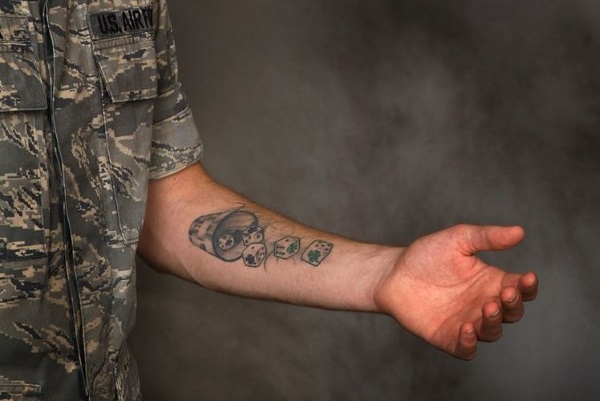
Ah, yes, the feet! Here is where the Air Force differs from other branches as well.
They allow tattoos on the feet below the ankle line.
In other words, Airmen can get inked up to their heart’s content (well, almost to their heart’s content).
Sleeves anyone?
It’s true, this means the USAF now allows sleeve tattoos — full-sleeves or half-sleeves, or anything in-between is now perfectly acceptable.
Hand tattoos are technically allowed, but as mentioned, they’re limited to one ring tattoo on one hand only.
According to one news report, “Current Airmen with existing hand tattoos that were authorized under the previous policy will be grandfathered in under the old policy standards.”
Related Article – Air Force PT Test Standards
What Air Force Tattoos Are NOT allowed?
While the Air Force has one of the more lenient tattoo policies of all the military branches, they still have standards and restrictions that must be followed.
As far as size and location of unauthorized tattoos, Airmen cannot be inked up in the following locations:
- The Neck
- The Face
- The Head
- The Scalp
- The Tongue
- The Lips
- The Hands
Otherwise, it’s fair game for size and location.
USAF Airmen can have tattoos that are much larger than their hand when covering it.
And if you think about it, that leaves A LOT of canvas to be tattooed.
See below for a visual of what the new Air Force tattoo policy entails, what they prohibit, and what they permit.
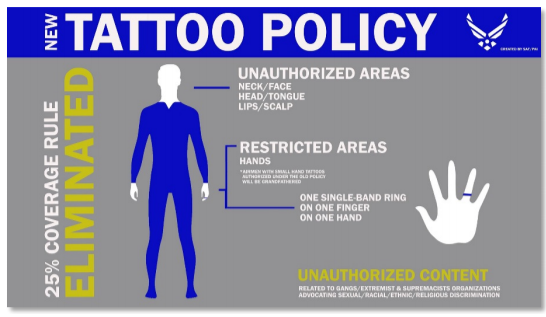
Now that you’re clear on the size and locations of unauthorized tattoos, let’s discuss the content of tattoos that are prohibited.
The following unauthorized body markings are not allowed anywhere on the body, even when covered up by PTs.
So keep this in mind when visiting a recruiter, because they will ask, and you must tell.
Here are the tattoos not allowed in the USAF:
- Any markings that are obscene
- Associated with gang activity
- Extremist or supremacist in nature
- Sexist tattoos
- Racist tattoos
- Ethnic or religious discriminatory tattoos
These tattoos will NOT fly, in more ways than one.
However, if you are unsure of a particular tattoo or tattoos, it doesn’t hurt to visit an Air Force recruiter and get their opinion.
Sometimes they give waivers in certain cases.
You’d hate to blow your chances simply because you think your tattoo will automatically disqualify you.
Air Force Tattoo Ideas And Meanings
Turns out, the Air Force gives you wings!
In fact, I would venture to guess that 90% of all Air Force tattoos somehow incorporate the famous wings overlapping a central star.
You’ll also see Airmen (and civilians too) sporting USAF tattoos that symbolize a deep patriotic pride in their nation and flag.
Eagles abound, and of course, no USAF tattoo is complete without showcasing the very symbol of the branch — the fighter jet itself.
Wings, Flag, and Fighter Jet
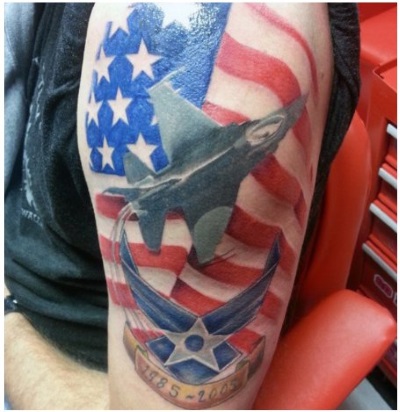
This upper-arm tattoo displays just about everything I just mentioned that makes for the quintessential USAF tattoo.
You’ve got the American flag, a fighter jet in action, and the official emblem of the USAF.
What more could you want in a tat?
Old-School Dogfighters
Another popular Air Force tattoo depicts war planes of the early 1900’s.
A go-to USAF tattoo — that also makes for an epic sleeve — is a group of aircraft in the throes of an epic ‘dogfight.’
This days-of-yore theme is rich with nostalgia and reminds us of our grandfather’s or great-grandfather’s service to our nation.
Inside the Cockpit
Top Gun, anyone? Seriously, what Airman could resist an inside-the-cockpit (dare I say selfie) view of a jet fighter in action?
This style makes for a great full back tattoo — and it happens to look really cool in this monochromatic black and white rendering.
Notice his comrades to either side of him.
USAF Airmen are all about brotherhood and having one another’s back, especially in the air.
WWII Shark-Mouth Fighter
Another favorite USAF tattoo design is the shark mouth fighter.
During WWII, nose art on aircraft became incredibly popular.
And perhaps the most unique and recognizable nose art of this time was the shark-mouthed German fighter, which was copied by the First American Volunteer group, the Flying Tigers.
Even today, nearly a century later, Airmen proudly wear this tattoo that embodies the aggressive, take-no-prisoners attitude of the Air Force at war.
Related Article: Air Force Height And Weight Requirements
Coast Guard Tattoo Policy
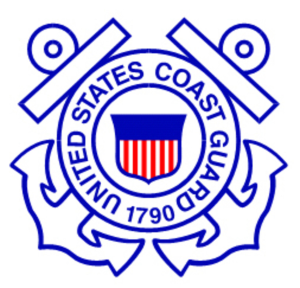
The coastal defense and maritime law enforcement branch of our Armed Forces — The US Coast Guard — is one of our country’s uniformed services.
And as such, they hold their personnel and service members to a high standard.
Like the other branches of military discussed in this article, the Coast Guard periodically reviews and updates their tattoo and branding policy to keep up with the times and our changing culture.
The Coast Guard’s latest tattoo policy was unveiled late 2016.
And according to Kurt B. Hinrichs /s/ Rear Admiral, U.S. Coast Guard Reserve Director of Reserve and Military Personnel, the changes to the policy are “minimal but important.”
The report released by Hinrichs explains that the policy update is to “ensure our workforce presents a sharp, professional military appearance to the public while also allowing individual expression through authorized body art that is consistent with the Coast Guard’s core values.”
It seems as though the Coast Guard is keeping in step with the trend that’s being followed by all military branches.
That is, they’re loosening up to attract recruits from the largest recruiting pool possible, without sacrificing “core values.”
But these changes in their tattoo policy aren’t for new recruits only.
Rather, according to the report, “All Coast Guard unit commanders, commanding officers, officers-in-charge, deputy/assistant commandants, and chiefs of headquarters staff elements shall comply with the provisions of this Instruction.”
So let’s dive in and see what the Coast Guard tattoo policy is really all about.
Related Article – Coast Guard Grooming Standards
What Tattoos Are Allowed in the Coast Guard
In the Coast Guard, you can have full sleeve and half-sleeve tattoos, full back and chest tattoos, and tattoos elsewhere on your body including your legs.
Members of the Coast Guard aren’t restricted at all when it comes to tattoo size or percentage of coverage.
However, any ‘body branding’ cannot be larger than a 4-inch by 4-inch area.
The Guard’s old policy detailed that tattoos weren’t allowed to be visible at all above the v-neck undershirt, and they have since expanded to the crew neck t-shirt.
No tattoo can be visible above the Coast Guard crew neck t-shirt.
Hand tattoos are allowed with certain restrictions. You can have one single band ring tattoo on each hand.
You can also have a finger tattoo that can run the length between the first and second knuckle. On top of that you can also have 1 small hand tattoo, per hand, between the wrist and first knuckle (so no tattoos on the palm), but it cannot extend one inch in any dimension.
The Coast Guard also allows Ultraviolet or black light tattoos.
The restrictions on these are exactly the same as for regular tattoos.
Cosmetic tattoos are also permitted.
Cosmetic tattooing is defined as a medical or surgical procedure conducted by a trained and licensed medical professional.
Some people get cosmetic tattoos to cover up scar tissue, or to otherwise make a medical issue less prominent in appearance.
The Coast Guard is perfectly fine with these types of tattoos.
As far as permanent makeup goes, the Guard only permits it on women, and only if it’s “conservative, in good taste, and complementary to the wearer’s complexion and the uniform.” (Source)
Furthermore, the report states that such permanent makeup tattoos “must not be brightly colored, must not be more than 1/8 inch width, and must not extend past the outer corner of the eye. No other permanent makeup is authorized.”
Related Article: Coast Guard Height And Weight Requirements
What Tattoos Are NOT Allowed in the Coast Guard
Location. Location. Location.
Similar to other branches of the military, the Coast Guard has very specific rules regarding the placement or location of tattoos.
No tattoos or brands are authorized anywhere on the head, scalp, face, and neck.
Otherwise, as far as location of tattoos go, your body is your canvas.
As for content of individual or groups of tattoos, the Coast Guard is particular about what they authorize and what is non-negotiable.
A Coast Guardsman cannot wear any tattoo that promotes:
- Racism/discrimination
- Indecency
- Extremist philosophies
- Lawlessness
- Violence
- Sexual explicitness
You can read all about how the Coast Guard defines the above terms in their official memo announcing the new tattoo policy change.
But before we move on, the Coast Guard does offer guidance in the form of an image collage as to what type of tattoo designs are not authorized (see below).
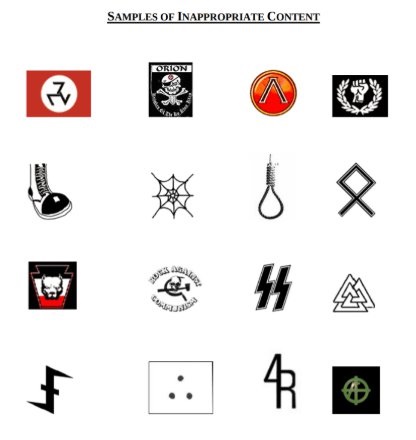
‘Coasties’ are also not authorized to have any body mutilations, also known as “intentional alterations and / or modifications to a member’s body (e.g. scarring, excessive ear piercing / stretching, tongue splitting, beneath the skin decorative implants, decorative tooth plating / engraving, etc.).” (Source)
Body Piercings are also prohibited, with the exception of women who may have small studded earrings.
As described in the Coast Guard’s latest uniform regulations, “no piercing… shall be made through the ear, nose, tongue, chin, eyebrow, or any other body part that would be visible while in any uniform.
This prohibition applies to male and female members alike and is specifically intended to limit the less than military appearance associated with vacant holes in the face and other exposed areas of the body.”
The official document goes on to explain:
Other piercings concealed by the uniform (such as navel and nipples) are strongly discouraged due to the potential for infection and medical complications. Under no circumstance shall such concealed piercing and accompanying jewelry be visible through, or interfere with, the professional appearance of the member in uniform, nor shall such jewelry be visible while onboard a Coast Guard unit.
In other words, the Coast Guard doesn’t mess around when it comes to body piercings.
So if you have them, you might as well take out the jewelry and let them close up.
Related Article – Coast Guard Ranks And Pay
Finally, some might be curious about what happens if an active service member has a tattoo, brand, or body piercing that violates the latest tattoo policy.
Well, according to the official Coast Guard statement:
Active duty and reserve members whose tattoos or brands are determined to violate this Instruction… will be given the opportunity to seek competent medical advice regarding removal or alteration of the disqualifying tattoo or brand.
Hey, that’s great news!
And any member of the Guard who is unwilling to follow the orders as outlined in the Uniform Regulations document will be “administratively separated” from the service.
Coast Guard Tattoo Ideas and Meanings
The USCG’s official flag shows a seal of an eagle with the words ‘Semper Paratus’ underneath it.
This is always a popular tattoo for Coast Guardsman. Similar to the Marines’ ‘Semper Fi’ (which means “Always Faithful”), Semper Paratus means “Always Ready.”
And that’s exactly what the Coast Guard is all about.
Preparing men and women to be ready at a moment’s notice to govern and bring peace to the coast and sea.
Here are a few of these tattoos, and other common Coast Guard tattoos.
Coast Guard Flag and Motto Tattoo Design
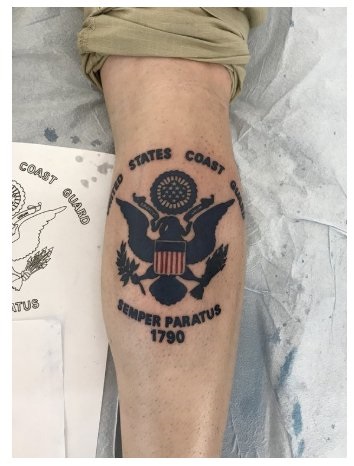
American flag, eagle, and anchor tattoo
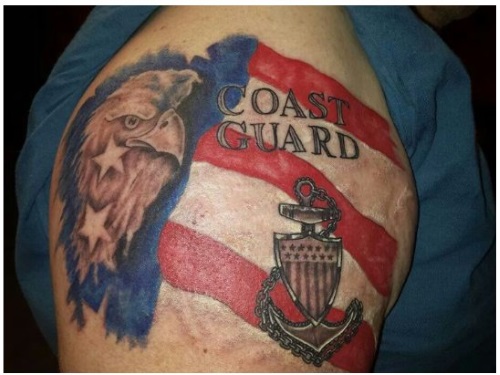
Another common USCG tattoo incorporates an anchor, which is the universal symbol for maritime affairs.
This harkens back to many of the US Navy tattoos we covered previously.
Ships and vessels
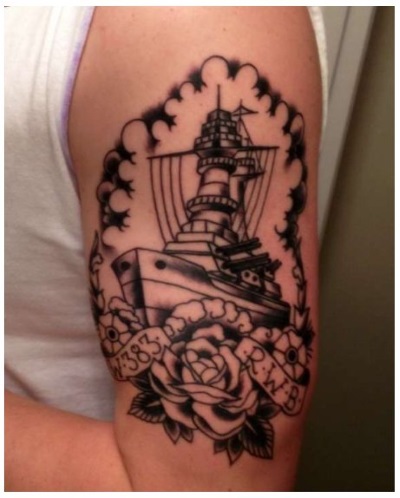
Besides just looking awesome on the upper-arm or back — or pretty much anywhere on the body — designs of great sailing vessels or ships are popular among members of the Coast Guard.
According to the Coast Guard Wiki page, “The Coast Guard is a maritime, military, multi-mission service.” (Say that 5 times fast).
During times of peace, the Guard operates under the Department of Homeland Security, but it can be transferred at any time to the Navy by the President.
So yes, Guardsmen do sail, and they have every right to get inked up like a sailor!
Which brings us to our next tattoo…
Popeye the Sailor Man
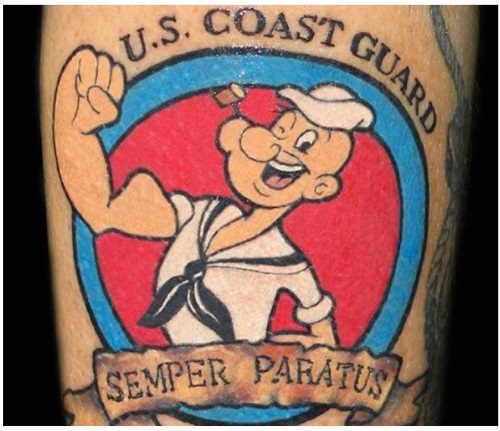
While Popeye is a “Sailor Man,” and therefore a card-carrying member of the good ‘ol U.S. Navy, he’s a go-to for Coast Guardsmen who are looking for a great tattoo.
Don’t be too surprised if you come across loads of Popeye-themed tattoos on Coasties young and old.
Related Article – Coast Guard Jobs List: A List Of All Ratings In The Coast Guard
Final Words on Military Tattoos
If you’ve been following along, you should be a military tattoo policy pro by now. We’ve covered the new and updated tattoo policies for each of the armed services — the Navy, Army, Marines, Air Force, and Coast Guard.
You’re also well aware that the overarching theme is this: the military is becoming less strict and more accommodating of tattoos — at least in size and number of tattoos.
As far as the content of tattoos, each of the branches still have their non-negotiables that you must be aware of and abide by.
We hope this extensive, in-depth guide helps you on your way to serving our country.
As they say, knowledge is power… and in this case, it’s half the battle! So go forth in confidence, knowing exactly what to expect from your desired service branch.
In the meantime, have a look at our other related posts, and keep an eye out for more in-depth guides and articles all about the military and how to join.
- Green Berets Vs. Rangers: 5 Major Differences - June 17, 2024
- Tattoo Policy For Each Branch Of The Military In 2023 - June 17, 2024
- Top 20 Reasons To Join The Military (and 7 Reasons NOT To) - June 17, 2024
Originally posted on March 12, 2019 @ 4:59 pm
Affiliate Disclosure: This post may contain affiliate links. If you click and purchase, I may receive a small commission at no extra cost to you. I only recommend products I have personally vetted. Learn more.
